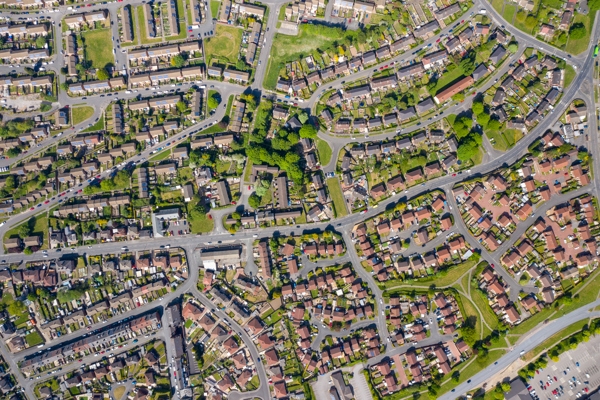Additional Dwelling Supplement (ADS) on uninhabitable residential property in Scotland
ADS is a supplemental tax charged on the purchase of a second residential property in Scotland (such as a second home or buy-to-let property). A building counts as a dwelling for the purpose of ADS if: (i) it is used or suitable for use as a single dwelling; or (ii) it is in the process of being constructed or adapted for such use.
When purchasing a property for renovation, it is important to consider the condition of the property. Where a property is "derelict", it may not be deemed a "dwelling" in terms of LBTT legislation. If this is the case, there would be no ADS payable on the purchase (which would be taxed at commercial rates) - that could be a large tax saving. Although not a relief as such, the condition of the property should be considered in the context of how the LBTT return is to be completed.
In the English case of P N Bewley Ltd v HMRC 2019 UKFTT 0065 TC, the First-Tier Tribunal considered this position. It was agreed that the state of disrepair in that case was sufficiently severe to render the property not "suitable for use as a dwelling". In this case, the heating and floor boards had been removed and safe renovation was impossible due to asbestos. The tribunal emphasised that the test is whether or not the building is suitable for use as a dwelling at the point at which SDLT became payable - it was irrelevant that the property was capable of becoming suitable in the future if renovated or demolished. Following the decision, the HMRC guidance was updated.
Although an English case, the definition of dwelling is identical to that in the LBTT legislation, so we would expect the same rationale to be applied to cases in Scotland. However, Revenue Scotland's guidance suggests that even if the property is in a dilapidated state, it would be counted as a dwelling - this suggests a desire by Revenue Scotland to apply a stricter test than was set out in Bewley. The HMRC guidance indicates that it is a question of fact and degree, and a property that is essentially habitable, but in need of modernisation, renovation or repair, which can be addressed without materially changing the structural nature of the property would still be counted as a dwelling. The guidance from both HMRC and Revenue Scotland is therefore not as clear as it could be, and each case must be assessed on its facts.
Points to note:
- The position on supplemental tax on second dwellings differs in Scotland and England, with Scotland paying 4% ADS on the purchase price of the second property and England paying the rate of 3% Stamp Duty Land Tax (SDLT) for properties over £40,000. Advice should be sought from a solicitor practising in the relevant jurisdiction.
Annual Tax on Enveloped Dwellings (ATED)
The ATED is an annual tax payable (largely*) by companies owning a residential property valued over £500,000. The tax is UK-wide and is charged for the period 1 April - 31 March in each year. It was introduced by the Finance Act 2013, and was created largely to dissuade individuals holding portfolios of high value property in corporate structures as a means to minimise tax liabilities.
A band system is used to calculate the amount of ATED payable, which can be checked on the UK Government's website. The system is based on the value of the property, and the amount of tax payable depends on the particular band and the number of days from purchase within that chargeable period. The annual charges begin at £3,700 for a property valued at £500,000 and increase to £236,250 for properties exceeding £20 million.
Where a liability arises in only part of the year then only a proportion of the annual amount payable will need to be paid. For example, if a company acquires a property worth £600,000 on 1 October 2020, the amount chargeable will be 182 / 365 x £3,700.
If a dwelling is disposed of it is then possible to amend the return made for that chargeable period, or make a further return, and claim the tax overpaid.
Does it make a difference if the dwelling isn't occupied / is uninhabitable?
A property is a dwelling and falls within the ambit of ATED if "it is used as a dwelling or suitable for use as a dwelling". HMRC guidance provides that whether a property is suitable for use as a dwelling is a question of fact and broadly the same approach will be taken in ATED as in SDLT / LBTT.
If a dwelling is damaged so as to be temporarily unsuitable for use as a dwelling, it will not be regarded as a dwelling within the scope of ATED if: (i) the damage was accidental, or caused by events beyond the control of the person entitled to the dwelling; and (ii) as a result of the damage the building is unsuitable for use as a dwelling for at least 90 consecutive days.
Points to note:
- An ATED return must be filed and the tax paid within 30 days of the date the property is acquired and then by 30 April for each subsequent year that the property is owned and subject to the charge. Penalties and interest will accrue after the 30 day window.
- As with most property taxes, there are exceptions to the general rule. One example of this is where a property is held by a person carrying on a property development trade and the property is held so that it will be developed and resold as part of that trade. Advice should always be sought as to whether any tax reliefs can be claimed.
- The return is to be filed with HMRC every year, regardless of whether a relief applies.
*ATED also applies to any partnerships with a corporate partner and collective investment schemes.


